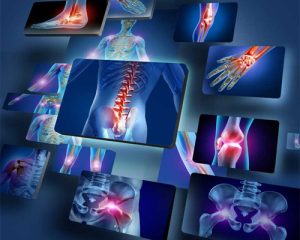This guide is a comprehensive work on acute pain management, built from current clinical practice guidelines put out by recognized medical associations. It is intended to inform primary care physicians and emergency medicine specialists on definitions, causes, assessments of the comprehensive array of treatment options using evidence-based pain treatment protocols, and monitoring strategies for acute pain. The guide further provides emphasis on clinical decision making and practical methods regarding acute pain assessment and implementation of pain treatment protocols to optimize patient outcomes.
 1. Defining Acute Pain
1. Defining Acute PainAcute pain is a finite condition that can be defined temporally and has an association with injury tissues. Most likely, this kind of pain will follow sudden-onset surgical stuff like trauma injuries or acute inflamed conditions. Unlike chronic pain, acute pain urges tissue damage and starts whole physiologic responses meant to protect or heal its injury. Acute pain tends to limit itself because the underlying condition gets treatment, but inadequate treatment will allow transition into chronic pain leading to potential difficulties in recovery and overall quality of life.
It is very important for the clinician to appreciate the point that acute pain is by all means not merely a symptom; it is also a significant diagnostic measure or point. Information such as the amount of damage to the tissue and nature of damage for clinical significance is derived from acute pain. Therefore, assessment should take place in order to strategize appropriate treatment. The acute pain assessment is important for also determining the cause underlying it, quantifying severity, and for customizing treatment protocols.
Causes of acute pain, numerous as they are, have to be very specific if one is to identify the cause of the patient’s acute pain, which is the right way to go about doing it:
The etiology of acute pain is usually multifactorial, and a systematic evaluation can be of utmost importance in identifying factors that predict the course of the pain or its risk of transitioning into a chronic pain state.
Management of acute pain begins with proper assessment. Acute pain assessment-in-that-it-is-sought not only to develop a diagnosis but also to monitor treatment response with an evaluation of effectiveness. A comprehensive approach to acute pain assessment must incorporate the following components:
The in-depth history and examination provide invaluable information regarding the onset, location, quality, and severity of the pain. Items of consideration will include:
A more objective manner of assessment is achieved by the regular use of a standard pain rating scale. The NRS and VAS provide numerically tangible evidence to use in the initial assessment at baseline and to follow-up on how the patient responds after treatment. Therefore, there should be repeat evaluations of the pain experience utilizing the two measures in order to suitably alter the pain treatment protocol in accordance with changing patient needs.
When the cause of acute pain is not obvious, some auxiliary diagnostic tests may be warranted. These may include imaging, such as X-ray, CT scan, or MRI, to assess for fractures, soft tissue injuries, and other pathologies. Laboratory tests such as complete blood counts and inflammatory markers may also assist in evaluating for infection or inflammation.
It is currently embedded in clinical guidelines for practice that an integrated approach to acute pain assessment should evaluate both reported pain scores and the objective findings in order to draw the strongest case for a pain management plan. It should be clearly understood and followed through the documentation made by physicians in the medical records relevant to the entire acute pain assessment, which will serve to maintain continuity in patient care.
 Treatment of Acute Pain
Treatment of Acute PainTreatment strategies have converged in an agreement to reduce pain intensity, improve functional outcomes such as disability, prevent transition from acute pain to chronic pain, and morbidity. Evidence-based pain protocols were a basis for selecting preferred therapeutic interventions for treatment. These sections present the principles that form the crux of acute pain therapy:
The basis for choosing pharmacologic agents is their etiology, severity, and some patient-specific parameters. Commendations of current-day guidelines regarding multimodal analgesia. This is an approach for the analgesic treatment modality that can be supplemented with some medications and techniques to bring about the synergistic effects but lessen doses of every one similar agent.
First-use medicines for acute pain are usually non-opioid and include NSAIDs and acetaminophen. The former are especially valuable where the inflammatory component contributes to the pain, as they are both analgesic and anti-inflammatory. Acetaminophen can be the alternative to patients who might not take NSAIDs because of either renal insufficiency or risk of gastrointestinal bleeding.
Opioids can be used for moderate to severe acute pain that is not relieved by an adequate dose of a non-opiate analgesic. Use should be closely tailored to the amelioration of adverse effects such as respiratory depression, sedation, and dependence risk, following strict prescribing guidelines such as dose titration and monitoring. In the acute care scenario, short-acting opioids are favored for the immediate relief of pain with transition plans as the underlying cause of the pain is addressed.
Gabapentinoids, antidepressants, and muscle relaxants may be among adjuvant analgesics in the multi-modal intervention, especially for an assumption of neuropathic pain mechanisms. In a similar manner, evidence-based treatment protocols for pain management would recommend appraising these medications for use on a specific case scenario since patient-specific and pain-related factors influence their potential use.
The rationale for the combination of pharmacologic agents is supported by innumerable studies and guidelines put forth by the American Pain Society and other authoritative organizations. This is how the multimodal approach permits the achievement of more effective overall pain control along with reduced reliance on any one medication class.
Within pharmacologic managements, non-pharmacologic interventions take a very important spot in acute pain management. Some of these are as follows:
Interventional treatments have to be informed pain management guidelines applying evidence into the decision process on whether the benefits justify the risks and whether interventions are appropriate indications for these procedures. Current clinical guidelines maintain that personalized approaches consider clinical presentation of the patient and preference.
The administration of different analgesics concurrently is considered “multimodal analgesia,” targeting different pathways through which pain is mediated. This reduces the side effects that result from extensive use of monotherapy without compromising the effectiveness of pain relief. A multimodal regimen may involve combinations of:
Management by multimodal analgesia has been recommended by multiple authoritative guidelines. A suitable individualized multimodal treatment plan is likely to arise from combining acute pain findings in an assessment with clinical judgment.
During the acute pain management process, specific patient groups and certain clinical scenarios must also be factored in for adjustments in management protocols:
In this respect, clinicians need to keep abreast with the ongoing changes in guidelines from the professional organizations, such as the American College of Emergency Physicians, American Pain Society, and others. Understanding pain protocols will help well address the unique challenges faced by the different patient populations.
Monitoring brings the acute pain management process. It ensures that maximum possible benefits reach the patients from the instituted management plan while minimizing the chances of adverse events. Good follow-up involves:
Continuous observations made by means of ratings with standardized tools such as the NRS or VAS allow tracking of the patient’s response to treatment. Calibrating therapy should depend upon documented changes in pain intensity, side effects, and overall functionality. Assessing acute pain should be performed much more frequently, particularly in the early treatment period.
To evaluate efficacy, we consider:
To make sure that the pain management operation is both effective and safe, a comparative analysis of dates before and after treatment is essential.
Other possible complications are opioid-induced respiratory depression, NSAID-induced gastrointestinal complaints, and local complications arising from an interventional type of procedure. Another one of the attributes that make monitoring so critical is that it allows for early recognition of these problems and the prompt rearrangement of the therapy in view of it. Clients should be educated about the signs of adverse reactions by the clinicians, with the setting up of direct lines of communication regarding any unwanted developments.
Transitioning care becomes essential once acute pain has subsided with adequate treatment, and this will include:
Current clinical practice guidelines support a smooth transition, in which the risks of recurrence or exacerbation of pain are minimized. Any successful acute pain management plan is ultimately founded on proper monitoring.
Acute pain management is a complex and multicentric area that requires thorough assessment, individualized treatment planning, and stringent monitoring. In this article, a detailed information suite on definition, causative factors, assessment of acute pain, general treatment including pharmacologic and nonpharmacologic interventional avenues, and monitoring strategies crucial for successful acute pain management in settings of primary care and emergency have been put forth. Evidence-based recommendations and pain care protocols, combining multimodal analgesia with regular acute pain assessments, effectively ensure personalized patient care and outcomes.
Clinicians constantly have to update their knowledge to stay aligned with evolving research and modifications in clinical guidelines published by leading organizations such as the American Pain Society and the American College of Emergency Physicians. Application of these principles not only increases comfort and function in the patient but also serves to prevent transitions from acute to chronic pain states.
Implementing the assessment tools, treatment modalities, and monitoring strategies as laid out in this guide will help ensure safe and effective comprehensive care in acute pain management by the healthcare practitioner. This will ensure better clinical outcomes, greater appreciation by the patient, and ultimately a higher standard of quality in health care delivery with regards to primary care and emergency setting.
For further reading and reference, it is encouraged that clinicians consult the latest editions of clinical guidelines and systematic reviews published by relevant medical associations and organizations dealing with several aspects of the research into pain management.
This guide will act as a supportive document for good practice in acute pain management, supported by evidence-based medicine for the interventions studied, so that each patient receives individualized and compassionate care within the specific clinical context surrounding them.